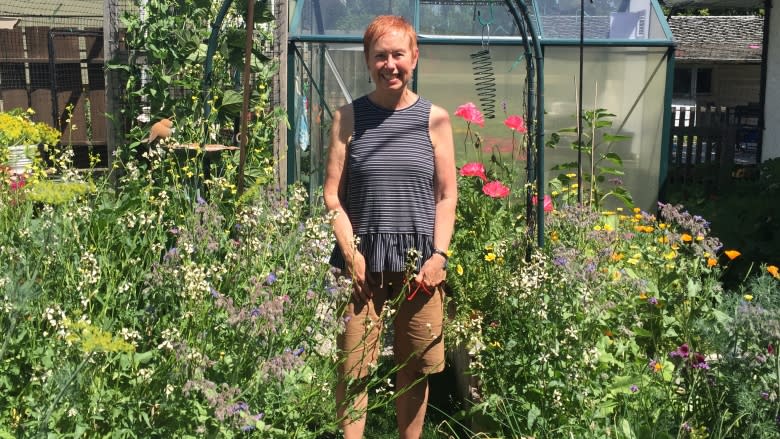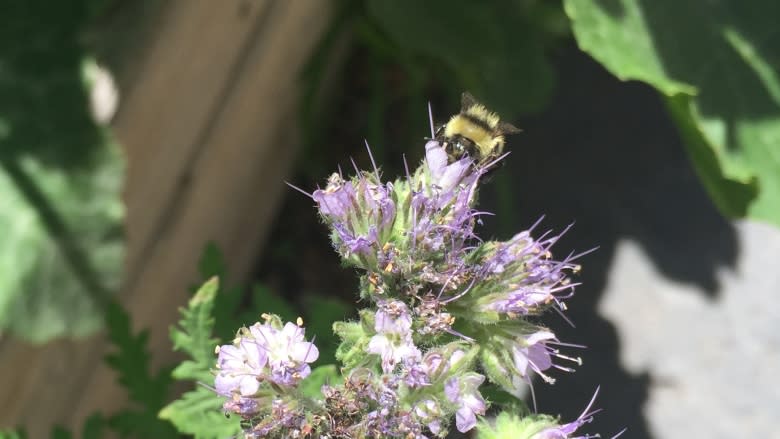Albertans snap photos of bumblebees for North America-wide study
Maura Hamill's northwest Calgary backyard is a hive of bumblebee activity, with dozens of the pollinators buzzing between her colourful flowers.
"I think I've got four species of bumble bees," Hamill said.
Hamill is one of 50 citizen scientists in Alberta that received hands-on training at Glenbow Ranch Provincial Park in June on how to catch and collect bumblebees as part of a North America-wide species count.
There are 29 different species in Alberta and 46 in North America.
Sarah Johnson is the lead biologist with Wildlife Preservation Canada's native pollinator initiative. The organization is a founding partner of Bumble Bee Watch.
"The bees that really need our protection are the native bees," she said.
"Since about the mid 1990s their populations have declined really rapidly."
Johnson said any member of the public can submit their bee photos to the Watch's website, and then regional experts verify the species' identification.
Citizen scientists trained at Glenbow Ranch first attended classroom sessions to learn how to identify and photograph bees, and then went out in the field to learn how to catch them.
Johnson gave a quick rundown of how to catch and photograph a bee:
- "When you're catching any type of bee, mostly you're going to find them on flowers because that's where they're eating.
- "You take the net and you swipe it past where the bee is. You can lift the net up and the bees will always try and crawl or fly upwards. Then you can place your hand below the net to trap the bee in the end of the net.
- "Take your plastic vial and slide it up through the net and put it overtop of the bee. And you can kind of manoeuvre it so the bee falls into your vial and then place the lid on top.
- "You can cool the bees down by putting them on ice or on a cool bag and then they slow down and aren't as agitated or stressed.
- "And then you can get photos of the parts of the bee that are important for identification. You can identify them by the pattern of colours you see on the fur of their abdomen or thorax. So often the best picture you can get is from the side or on top of the bee."
Johnson said citizen species counts are vital for learning more about bee populations.
"By collecting information on all of them and having members of the public help us track where these different species of bumble bees are, we can get a better idea of which species are at risk of going extinct," she said.
- Read more articles by CBC Calgary, like us on Facebook for updates and subscribe to our CBC Calgary newsletter for the day's news at a glance.
With files from Lucie Edwardson



